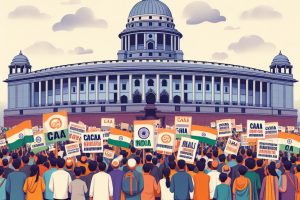Yasmeen Aftab Ali
 The government extended the lockdown till the 30th of April. This is a wise decision to help flatten the curve. The public transport inter-province and in-between provinces remains suspended. Lives in villages goes on as usual. Visiting, meeting, particularly at deaths, so on. The only two things that indicate something is off are one; only the grocery shops and banking facilities are open and two, the motorway being closed.
The government extended the lockdown till the 30th of April. This is a wise decision to help flatten the curve. The public transport inter-province and in-between provinces remains suspended. Lives in villages goes on as usual. Visiting, meeting, particularly at deaths, so on. The only two things that indicate something is off are one; only the grocery shops and banking facilities are open and two, the motorway being closed.
At time of writing of this piece the official website claims 9,216 confirmed cases in Pakistan. The breakdown given is 2, 764 deaths (Sindh) 4, 195 (Punjab). Total deaths are 192 and 2, 066 recovered. The website states 185 tests conducted in Islamabad, 465 in Baluchistan, 1, 276 in KPK, 50/281 in AJK & GB respectively.
The questions on how much it has spread and if the published numbers above are accurate in all honesty cannot be answered. The reason is that we in Pakistan are under testing. As per a report, “Pakistan has tested 70 people per million of its population based on official NIH figures as of March 30.” If we compare this figure with some others, here it how it compares: Germany has tested 11,000 per million, Italy tested 9, 000 per million. Well then, Italy has had a very high graph of disease infliction. So high testing makes sense.
In Pakistan having limited availability of testing kits, with only 15 laboratories having biosafety level 3 testing expertise for the virus, the pressure must shift along with whatever inadequate health facilities we can offer- to social distancing and undertaking all precautions.
As governments try fight to create a balance between maintaining precautions with economy takeoff, WHO has issued a strong warning that, “rushing to ease coronavirus restrictions will likely lead to a resurgence of the illness”
‘This is not the time to be lax. Instead, we need to ready ourselves for a new way of living for the foreseeable future,” said Dr. Takeshi Kasai, the WHO regional director for the Western Pacific. He said governments must remain vigilant to stop the spread of the virus and the lifting of lockdowns and other social distancing measures must be done gradually and strike the right balance between keeping people healthy and allowing economies to function.” (ABC News 20 April 2020)
In this situation Pakistan’s allowing congregational prayers in the mosques is deeply distressing- and being viewed as giving in to pressure by the religious fraternity. A 20- point guideline has been given to be followed by mosques. Though many guiding points make sense; here is one (Point No 10) that does not: “There should be a six-foot distance between people during congregational prayers.”
This may be more or less possible for mosques in DHA, Faisal Mosque Islamabad and so on, generally speaking this cannot be maintained. There are millions of mosques all over the country, one serving every locality. Most are small areas and cannot possibly follow the standard of distance laid out in the SOP. Next question would be will there be a force, the Tiger Force for example deputed to check the 6 feet distance being followed in every mosque all over the country? This seems unlikely. On a separate not where is the Tiger Force deputed?
Other countries like Egypt, Saudi Arab, Kuwait for example congregational prayers have been barred. The violation of the maintaining of social distance will pose a hazard to public health. Congregational prayers is a pillar Muslims follow and must never be undermined, however, making adjustments to save lives of the citizens in a state akin to an emergency is the constitutional duty of the government of Pakistan.
“Madrassas in Pakistan produce graduates who fill the mosques of Pakistan, and they depend on mosques for their livelihood. The mosque economy depends on alms and is therefore tied to the flow of bodies in the mosque. To demand a closing of mosques can, then, potentially invite the ire of one’s constituency…… The reluctance of the government of Pakistan to close mosques and ban congregational prayers despite the obvious and immediate threat posed to Pakistani citizens by Covid-19 is a clear manifestation of this problem.” (TRT World March 20, 2020)
Point 20 of the SOP states: “If during Ramazan, government authorities feel that the situation has got out of control and the number of cases surge, the authorities can review the decisions taken.” This clause subtly creates the loophole to close the window if the need so arises. However, the lowering of the bar for social distancing would already have created the havoc. As for many days, a victim of virus may himself or herself may not know that he/she has the disease.
Majeed Lashari, a Lahore based lawyer states, “If one compares on dashboards and data few of the figures, they are very alarming. Since the last 4 days or so—- Pakistan is constantly amongst the 10 countries with most ‘new cases’ and same for ‘new recorded deaths’. The lockdown was imposed at the right time but the relaxation in it comes too soon, especially allowing the congregational prayers respecting wishes of our religious fraternity. Stats showcase ‘population interaction and spread’ from 7-14 days ago. A week back we were in full lockdown yet it’s spreading. 2 weeks from now is what is scary.”
Unless COVD-19 is really under control the relaxations encouraging social mingling can lead to serious situation that our healthcare facilities cannot cope with.
The writer is a lawyer, academic and political analyst. She has authored a book titled ‘A Comparative Analysis of Media & Media Laws in Pakistan.’ She can be contacted at: yasmeenali62@gmail.com and tweets at @yasmeen_9





